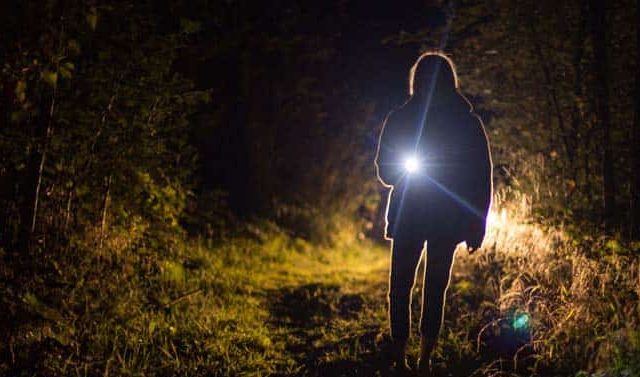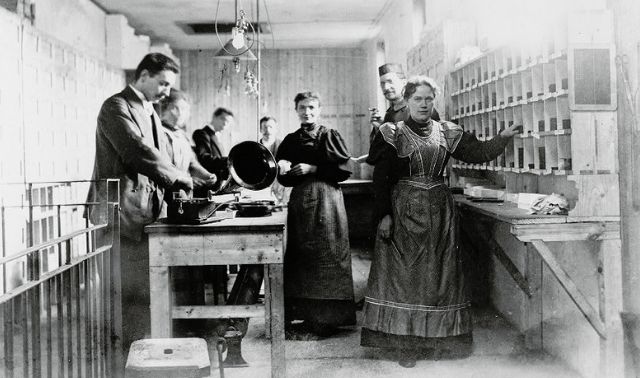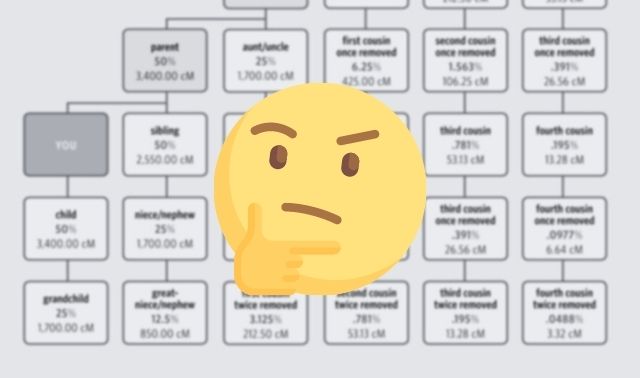Sign up for the Family Tree Newsletter Plus, you’ll receive our 10 Essential Genealogy Research Forms PDF as a special thank you!
Get Your Free Genealogy Forms
"*" indicates required fields

Even though Sherlock Holmes is fictional, genealogists can learn a thing or two from the way this private investigator doggedly tracks down his targets. The legendary detective’s use of keen observation and deductive reasoning is key in helping him solve tough cases.
These same skills can help you even if you’re not fighting crime. Holmes’ techniques will enable you to find living relatives who may have family information—stories, photos, genealogical details—to share. With a bit of high-tech surveillance and some shoe leather, you may be able to uncover the ancestor answers that have eluded you for years.
So channel your inner Sherlock Holmes and grab your magnifying glass, because we’ve got 10 sleuthing strategies to track down living relatives and get genealogical clues.
1. Observe and Gather Facts
Your first step as a pedigree private eye is to write down or organize all the information you know about the relative you’re looking for. For example, if you’re looking for your grandfather’s sister, was she older or younger than your grandfather? This helps narrow down an age range. Also note the person’s name (maiden and married, for a woman) and last known place of residence, as these crucial pieces of information will help you get closer to your target. Other information, such as religious affiliation, alma maters, occupation and hobbies also may prove valuable.
No piece of information is too obscure to ignore, but remember Holmes’ wise words as you begin: “It is of the highest importance in the art of detection to be able to recognize out of a number of facts, which are incidental and which vital. Otherwise your energy and attention must be dissipated instead of being concentrated.”
2. Search Broadly on Search Engines
Amy Urman, a genealogist and owner of the Nosy Wilma Agency in Tucson, Ariz., says that savvy private eyes run an average of five searches with five different search engines for each person they are tracking down. A few search engine stars include: Google, Yahoo!, Dogpile, Ask.com and Bing.
Urman suggests first searching for variations of the person’s name. For common names, try combining the name with another known fact such as John Taylor +car sales or Sally Moore +Chicago. If the person has a unique name, you may want to put it in quotes to get results for the exact name: “Austin DeTorre.”
Many search engines also have advanced search options that provide additional fields to help you target your search. Look for an Advanced Search link next to the main search box on the home page of your favorite search engine site—it’s the easy, fill-in-the-blank way to search without having to memorize search operators. For example, Google’s advanced search lets you look for exact phrases and eliminate unwanted words. So if you’re searching for someone with the last name Lincoln, you may want to exclude Abraham from your search to weed out results about Honest Abe.
3. Use Social Media
Social media websites are all about connecting, but you shouldn’t rely completely on genealogy-based sites such as GenealogyWise. Try looking for relatives on mainstream social networking sites such as Facebook and LinkedIn. Facebook caters to the masses, while LinkedIn is geared toward businesspeople. Sign up for a free account (if you don’t already have one), then search through millions of people in minutes by entering your relative’s name in the search box and clicking the Search button. If you spot a match, you can send a “friend request” along with a personal note explaining that you think you may be related.
Don’t forget to tap into genealogy websites, as well. Though most genealogy sites hide family tree information about living people, you may be able to obtain information or even family photos from other users. In the March/April 2012 issue of Family Tree Magazine, Thomas MacEntee advises reaching out to other users on sites like Ancestry.com, MyHeritage and WikiTree.
4. Look in Phone Books
Urman tells a story of spending hours searching online for someone, to no avail. Later on, as she was looking for a plumber in the Yellow Pages, it suddenly hit her: She had overlooked the obvious—the phone book—and there he was! Telephone books and directories often are bypassed in today’s high-tech world, but can still deliver the goods.
First, try both printed and electronic phone books, such as AnyWho, 411, and White Pages. These sites all provide free searching, and some offer more difficult-to-find information for a price. The searches pull details from public information databases, professional work listings, business partner lists and marketing databases they have licensed access to. Note that the data can be current or out of date. Keep this in mind as you search, and carefully document which website the data came from so you don’t end up searching the same sites again.
For best results, focus on the listings in which the age of the person matches the age or approximate age of the person you’re searching for. For each age match, note the corresponding address. Match this address to White Pages listings for the same address, creating a short list of potential contact information for the person you seek.
If you don’t find the listing you’re looking for in the phone book, pick up the phone and call 411 directory assistance. Don’t get discouraged if the voice on the line declares the number is unlisted. Unlisted numbers actually come in two forms: Unlisted numbers are omitted from the official telephone book, but available through directory assistance, and the operator will give you the number. Unpublished numbers are neither published in the directory nor available from directory assistance.
You might hear a recorded message saying the customer has requested his or her number not be listed, but all is not lost. You’ve just learned something valuable—you confirmed that a person with your target’s name does reside in that particular city. If the person owns real estate, you can get her address from the tax assessor’s office and write her a letter. If she’s a renter, you may be able to get an address from a voter registration record or the state Department of Motor Vehicles. See No. 9 for more on driver and vehicle records.
Keep in mind that information in both printed sources and on websites is one to 18 months old on average. So your relative’s absence from the phone book isn’t conclusive evidence that she doesn’t reside in a particular town.
5. Investigate Public Records
As genealogists, we know our ancestors’ interactions with the government created valuable records. This is the case for living relatives, too, and a surprising number of these records are available to the public. A good place to start online is BRB Publications’ free public records site, where you’ll find a comprehensive list of free online spots to access civil records, criminal records, driving records, real-estate records, as well as public-record vendors. Search by state, then county and record type.
If you don’t know your relative’s current location and you’re willing to pay for results, type the name into the Public Records Search box and do a nationwide search. The initial results show each person’s current age, cities of prior residence, and his or her relatives’ names. It also shows what other information is available for a fee, such as birth date, phone number, address, address history, average income, home value, lawsuits and judgments, marriage and divorce records, and more. The more detailed information you want, the more it will cost, ranging from about $1.95 to $49.95.
6. Research Known Friends and Relatives
In his book Be Your Own Detective (M. Evans and Co.), licensed private investigator Greg Fallis and co-author Ruth Greenberg describe some basic principles every gumshoe should embrace. Key among them: Nobody lives in a vacuum. People are interdependent. Unless they’re in solitary confinement at the state pen, everyone has interactions with other people on a regular basis. When you hit a dead end in your search, track down the people your relative might come into contact with.
In the case of one of my missing Cooke cousins, it was her interest in art—specifically, painting—that kept popping up in interviews with relatives. So I asked myself, who would a painter hang out with? Other artists, of course. And where would I find artists? At the local art gallery. A quick internet search unearthed the two galleries in the town where I suspected she lived. I sent an email to the one that specialized in paintings, asking if the staff knew her. They didn’t reply directly to me, but I later learned that they did indeed forward my email to the missing cousin.
7. Home in on the Last-Known Residence
Whether you retrieve a few possibilities from your online searches or find an address in an old Rolodex, mailing a letter of inquiry to the last-known address of your kin is well worth the effort. The post office or current occupant may forward the letter or send it back to you with the new address. Even the worst-case scenario—the letter being returned as undeliverable—is important evidence: It means you can cross that address off your list. In your case file, be sure to track the source for each address. Chances are that other information received from that same source also is outdated.
In my case, a letter-writing campaign paid off with big dividends. Although my missing kin had eventually received my email, she later confessed that she was somewhat skeptical of the message until she received my handwritten letter. Within minutes of receiving it, she picked up the phone and we scheduled a meeting. When we met, she brought boxes from her attic filled with family history. She has no children and seemed relieved to place the treasures in the hands of a family historian who could organize and disseminate the information.
From her stash, I was able to enhance my genealogy collection with 19th-century photos from the United States and England (some of the ancestors I had never seen before), a 1962 audio tape of Grandma and Grandpa Cooke playing old silent movie scores, Grandma Cooke’s personal Bible, Grandpa Cooke’s orchestral leader bowtie and a collection of old letters.
8. Focus on Religious and Other Affiliations
People are creatures of habit and often are reluctant to change affiliations. This is good news for private investigators. Even if you haven’t had contact with your relative for 20 years, it’s likely that many of their activities and habits remain the same. Hobbies enjoyed in childhood often are pursued as adults (such as my cousin’s interest in art). We all know how difficult it is to change a habit. By revisiting your relative’s old haunts and associations, you may be surprised to find solid leads to a current location.
To start, consider your relative’s religious affiliation. People don’t tend to change religions, so if you know that your relative or her family lived in a certain town and were, say, Catholic, look to the Catholic churches in that town. Some churches will let you place an inquiry in their newsletter or Sunday bulletin. See if you can get a member directory from the church office or a local library. Spend a few moments explaining your case to the church secretary, who is often the key communication center of a church.
To find a particular Christian church in a geographic area, go to USA Churches. Select the state of interest, then the city. You can use the sites listed in our church records toolkit to locate directories of congregations of other faiths.
Many people also have strong allegiances to their alma maters. Websites such as Classmates.com specialize in reconnecting classmates from grade school through graduate school and even neighbors from the old ’hood. Search geographically or by school name. (A paid subscription is required for some features.) Consider college fraternities and sororities, too.
9. Look for Licenses
Doctors, attorneys, airplane pilots, hunters, fisherman, drivers, hairdressers and professional private investigators must be licensed. Licenses generally provide the person’s name, address, phone number and age. You often can find the information online, in print, by phone or in person.
For hunting and fishing licenses, click the appropriate state on the Recreational Boating and Fishing Foundation’s site to visit the state’s department of natural resources page, which may have a license search. To search licenses for professionals such as doctors, attorneys and architects, try the state-by-state Occupational Licensing directory. Select the state and then the type of license.
Most American adults have a driver’s license. BRB Publications specializes in products for investigative professionals, including the book The MVR Access and Decoder Digest. This is a national reference detailing the privacy restrictions, access procedures, regulations and systems of all state-held driver and vehicle records. Find state Department of Motor Vehicle contact information by checking this directory. Record availability varies by state.
The Sourcebook to Public Record Information (also from BRB Publications) is a must-have if you regularly search for living people. Find a copy in a library near you using WorldCat. At nearly 2,000 pages, it has detailed profiles of 20,000-plus government agencies and institutions, including more than 8,600 state licensing boards.
10. Play Politics
In today’s identity theft-conscious society, many people who are careful about what they post online think they’re safe from being “discovered.” While giving a talk to a group of lawyers, Urman found the group skeptical that any of her tactics could work on them. Within seconds, she’d pulled up the campaign contributions of one cynical participant, who was shocked to see her personal information online.
Try it for yourself: A quick search of Obama, Barack provides the name of each donor with his city, state, ZIP code, occupation, donation amount and date of donation. Search for campaign contributions online at OpenSecrets.
“Each fact is suggestive in itself,” Sherlock Holmes says in The Adventure of the Bruce-Partington Plans. “Together they have a cumulative force.” The same is true for your family investigations: Combining super sleuthing techniques with your genealogical research skills will make your success, as Holmes would say, “Elementary!”
Tip: Visit Lisa Louise Cooke’s YouTube channel to learn more about finding your relatives.
A version of this article appeared in the July 2010 issue of Family Tree Magazine.
At a Glance: Resources for Finding Living Relatives
Websites
- Facebook: With upwards of 3 billion active users per month, Facebook is a great place to find and connect with living relatives—and even see whether you already have contacts (relatives!) in common. Introduce yourself to possible relatives using the messaging tool; attach an old family photo for good measure.
- Intelius: Run free searches of this background-report database for a person by name or phone number; you must enter your email address to receive the results. There is an address search option, too; results are available only by activating a subscription. (Address searches are especially helpful for identifying other relatives associated with a known address, such as siblings or parents.)
- LinkedIn: Search among more than 775 million LinkedIn profiles for a person’s contact information and professional background. Many profiles include headshots, which can help you connect a DNA match’s photo or location with a LinkedIn profile.
- TruePeopleSearch: Among the most helpful people-searching websites is this free resource. You don’t need to provide personal information, an email address, or payment to run searches. Name searches provide known addresses, phone numbers, aliases and possible relatives. Phone and address searches may report additional names (possibly with age and location) associated with that number.
- Whitepages: You can search by name, phone or address without entering your own information. Search results for a name and state may appear with names of possible relatives. Address search results only report current residents and neighbors. Results for phone searches and other results that provide full contact and identity information require a purchase or subscription.
Summaries written by Sunny Jane Morton. Originally appeared in the November/December 2021 issue of Family Tree Magazine.
Books
- How to Locate Anyone Who is or Has Been in the Military, 8th edition by Richard S. Johnson (MIE Publishing)
- International Vital Records Handbook, 7th edition by Thomas J. Kemp (Genealogical Publishing Co.)
- Locating Lost Family Members & Friends by Kathleen W. Hinckley (Betterway Books)
- The Sourcebook to Public Record Information: The Comprehensive Guide to County, State, and Federal Public Record Sources by Michael Sankey (BRB Publications)
FamilyTreeMagazine.com is a participant in affiliate programs through Genealogical Publishing Co and the Amazon Services LLC Associate Program. It provides a means for this site to earn advertising fees, by advertising and linking to affiliated websites.
ADVERTISEMENT











